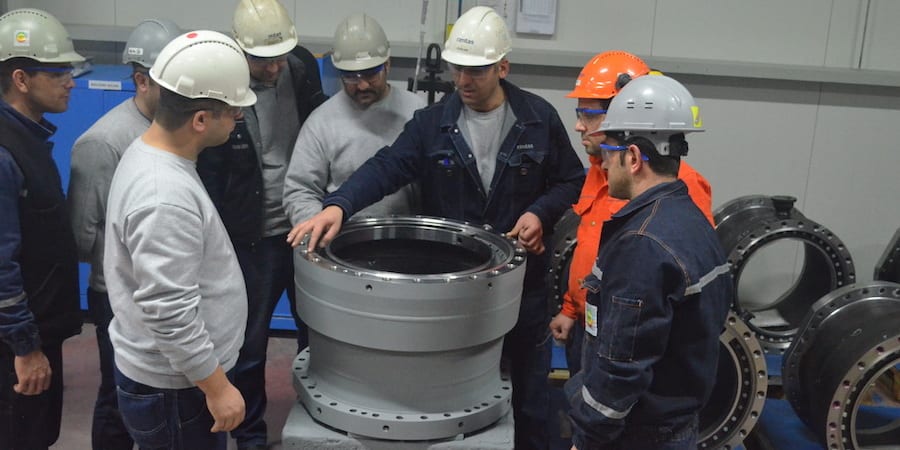
An I.T. mind - Saving your job
COLUMN - A lean transformation is not just a prerogative of top management, but a goal to be shared across an organization. Here's a few thoughts on how I.T. people specifically can contribute to a turnaround.
Words: Rodrigo Aquino, Lean Institute Brasil
Very much like start-up organizations, most companies today - from small-medium enterprises to large multinationals - face extreme uncertainty in their growth prospects.
The conditions in which businesses have to operate nowadays are particularly adverse: customers are constantly looking for new products and services, and for faster and easier means of acquiring them; they demand higher quality and lower prices; competition get fiercer every year; in the customer's mind, technological advances create an ever-growing craving for innovative products, which often fail to meet expectations once taken to market.
While these situations probably sound familiar to most of us, somehow they seem to represent a slightly more severe problem for I.T. organizations: the online market has a reputation for brutality and volatility, and a web company that is here today may be out of the market (and of people's minds) by tomorrow morning. According to several studies, nine out of ten Internet-based organizations disappear within the first four months.
As much as entrepreneurs like Mark Zuckerberg and Jeff Bezos continue to offer inspiration to millions of people who dream of launching the next app of the century or game-changing software, for a lot of I.T. professionals the daily worry is in fact to stay employed. Considering market conditions and customer behavior, the question most commonly found lingering in their minds is how long their job will not be there for.
You might be tempted to think this is only a problem of senior management and to not worry because there's nothing you can directly do to help. Actually, this is also your problem, because bankruptcies spare no man.
But there is also good news. You actually can, and will, save your job if you actively support your organization in its journey to improvement. Here's a few tips for you and your colleagues in an Information Technology department or an I.T. company:
· Understand in which part of the value chain you work (for example: software development, maintenance, support, and so on). How important is your work to the customer? How can you improve it? Talk to your boss, present some ideas and if necessary, prepare an A3.
· Identify waste and what prevents the customer from receiving the best service or software possible. It's often very simple to see the mistakes other people are making, but what happens when we are the ones getting it wrong? Are our errors as easy to spot? For some examples of waste in I.T. click here.
· The closer you are to the end of the process (the customer), the greater your chances of finding problems that have a negative impact on customer satisfaction. Put yourself in the customer's shoes, go to the gemba, look for problems, and find simple and quick solutions.
· Talk with other developers - sometimes they see problems that you have not yet noticed. Nothing like a fresh pair of eyes.
· With the full involvement of senior leadership, software developers can find and solve problems quickly. In an article called Essential Attitudes for Improvement, Lando Nishida describes how people should ask the right questions: knowing the "what" and the "how" makes a big difference as you attempt to understand a problem and consequently identify the best solution.
· I.T. support has direct contact with the end user and, therefore, valuable information that can help you to improve a product or service quickly. However, the data often gets lost over time because the company does not have a system in place to check and classify customer complaints. Make sure there is a specific area of support for the software you work on and ask them what they have learned from talking to customers lately.
If each employee adopted these simple behaviors, together they would make a big difference in helping their company to re-position itself in the market, become more focused on customer feedback, and improve to better respond to customer requirements.
Don't forget these are just a few of the actions you can carry out. There are many other ways you can contribute to achieving prosperity for your organization, and therefore secure your job. If you cannot think of anything, a good trick is to ask yourself this question: "If I were the owner of the company, what would I do?"
THE AUTHOR

Rodrigo Aquino has worked in the I.T. area for 16 years. He holds an MBA in Software Engineering from the University of Sao Paulo and a degree in Computer Science. He is currently Coordinator of Information Technology at Lean Institute Brasil where he has worked for over three years.
Read more


CASE STUDY – With plans to double capacity year on year in its new precision machining business, a Turkish company found in lean a way to control growth by stabilizing old processes while new ones are introduced.


FEATURE – Repetitive flexible supply is a very effective method to level production scheduling, but as a FMCG company in the Netherlands found out, sometimes a number of conditions must be met before the approach becomes viable.


FEATURE – Reflecting on some of the work he’s recently observed, the author discusses what lean thinking teaches us about making life easier for the value creators in our organizations.


FEATURE – The author discusses how the daily practice of lean thinking develops perseverance and the grit a leader needs to improve an organization.

